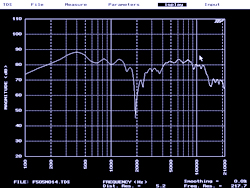What’s the best way to equalize a sound system—by ear or by measurement?
The short answer is both. Each method compliments the other. The ultimate qualification for sound quality is the ear. If it doesn’t sound right, nothing else matters.
I once spent two-plus hours tuning a church sound system using the same methods I’ve employed on more than 100 systems, and the resulting sound was terrible. Rather than trying to convince my ears that the very good curve on the laptop screen sounded just wonderful, I had to trust my ears that something was wrong.
It turned out that my calibrated microphone was damaged. Once the process was repeated with an undamaged mic, the sound quality matched the curve.
The ear is the final judge. No matter how enamoring the technology, common sense must prevail. However, due to things like illness, drug effects, fatigue, poor acoustic memory (from which we all suffer) and hearing deterioration due to age, tuning a system purely by ear will not produce consistent sound quality nor the absolute best a system can do.
Tuning by measurement will uncover problems that the human ear just isn’t very good at detecting, but they are problems that make the difference between sound that’s “O.K.” as opposed to spectacular (and consistent).
I challenge anyone to find the one out-of-polarity transducer in a large system by ear. You might be able to tell something is wrong at a particular listening position, but you just can’t tell exactly what. Measurement pinpoints that type of problem exactly.
Don’t get me wrong – the ear is ideal for certain things. For example, balancing levels between separately amplified multi-way loudspeakers. Level matching two jagged response curves of a woofer and high-frequency section on a computer screen is much more difficult to get right than by ear. This is particularly true when changing just 1 dB of relative level can completely change the character of the speaker system.
And there are many systems that have been “TEF’ed , SIM’ed and Smaart’ed” that plain just don’t sound good. Could this be a big reason some sound folks think that measurement systems just don’t work? I think so. But the issue lies not with measurement systems, which are improving steadily. No, the largest problem, by far, is operator error.
Rather than continue the debate, let’s get busy with addressing the errors that commonly plague us as we tune by measurement.
Big Three
Operator errors fall into three general categories:
1) The flat RTA response misnomer
2) Improper measurement-mic placement, and
3) Attempted equalization of multiple-source or multiple-reflection-contaminated, FFT measurements
It’s been my experience that 95 percent of all sound systems are equalized improperly due to these three errors, and this is why some “road dog types” thoroughly mistrust measurement geeks.
An RTA (Real-Time Analyzer) is a two-dimensional measurement system that displays energy in dB SPL or volts versus frequency in hertz. Meanwhile, TEF, Smaart, SIM and the like are all 3-dimensional (3-D) measurement systems that display energy vs. frequency vs. time.
Therefore an RTA, unlike FFT (Fast Fourier Transform) based 3-D measurement systems, is time blind and lumps all energy occurring within a fraction of a second together. A fraction of a second is an eternity to a 3-D measurement system.















